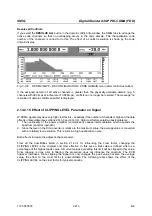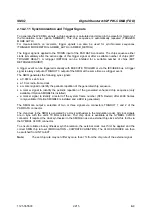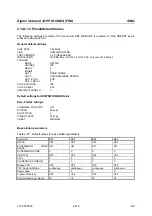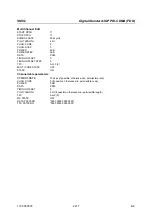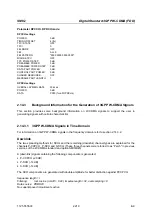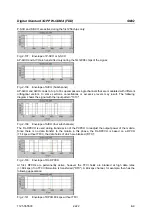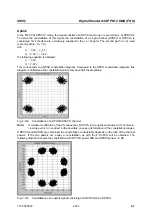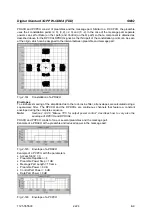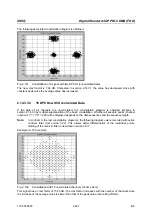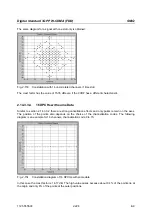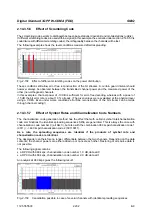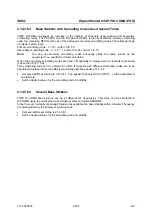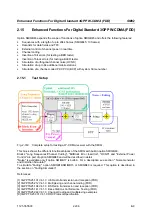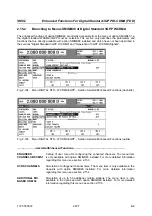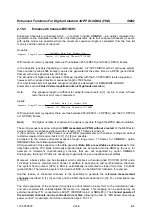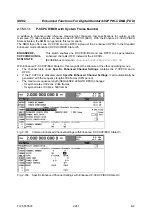
SMIQ
Digital Standard 3GPP W-CDMA (FDD)
1125.5555.03
E-9
2.227
The following associated constellation diagram is obtained:
Fig. 2-151
Constellation of a signal with two DPCHs (uncorrelated data)
The new crest factor is 7.64 dB. Compared to section 2.14.3.1 the value has decreased since with
constant peak value the average value has increased.
2.14.3.3.3
16 DPCHs with Uncorrelated Data
If the data of all channels are uncorrelated, the constellation diagram is obtained similarly to
section 2.14.3.3 by multiple superposition of the basic constellation. Whether all possible points (channel
1)
2
= 17*17 = 289 will be displayed depends on the data sequences and the sequence length.
Note:
In contrast to the last constellation diagrams, the following diagrams were recorded with active
receiver filter (root cosine 0.22). This allows better differentiation of the individual points.
Setting of the receiver filter is described in section 5.17.
Example for 16 time slots:
Fig. 2-152
Constellation with 16 uncorrelated channels (16 time slots)
This signal has a crest factor of 15.35 dB. The crest factor increases with the number of channels since
the increase of the average value is slower than that of the peak value (cancelling effects).

